How much does it cost to start a restaurant? That’s a question every aspiring restaurant owner asks. Long Phuong Porcelain will help you break down the essential startup costs and share valuable tips for running a successful restaurant.
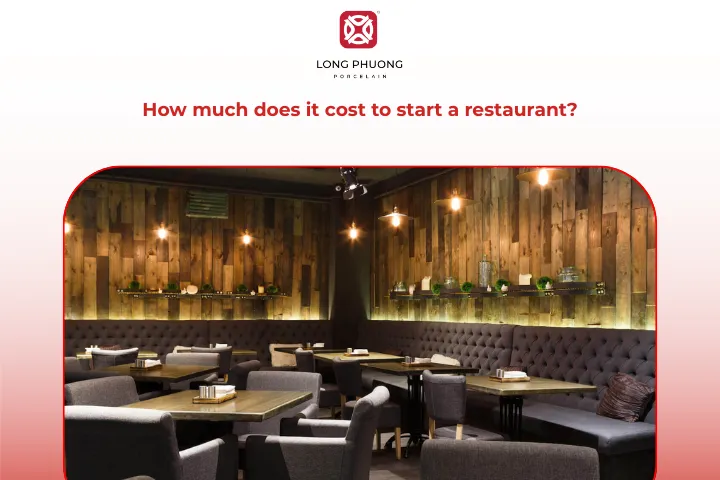
1. How much does it cost to start a restaurant? A breakdown of all expenses
The question “How much does it cost to start a restaurant?” is one of the first questions every aspiring restaurateur asks. Below is a detailed breakdown of typical restaurant startup costs to help you plan your budget realistically.
1.1. Monthly rent/lease
Your restaurant needs a physical space, and that space will take a big portion of your budget. Most landlords require a security deposit, the first month’s rent, and sometimes the last month’s rent in advance. Rent prices depend heavily on location. A downtown corner lot will cost much more than a small storefront in the suburbs.
- Typical cost: $3,000–$20,000 per month, depending on size and city
- Upfront deposit: 2–6 months of rent
Ideally, rent should stay below 10% of your projected monthly revenue to keep your business sustainable.
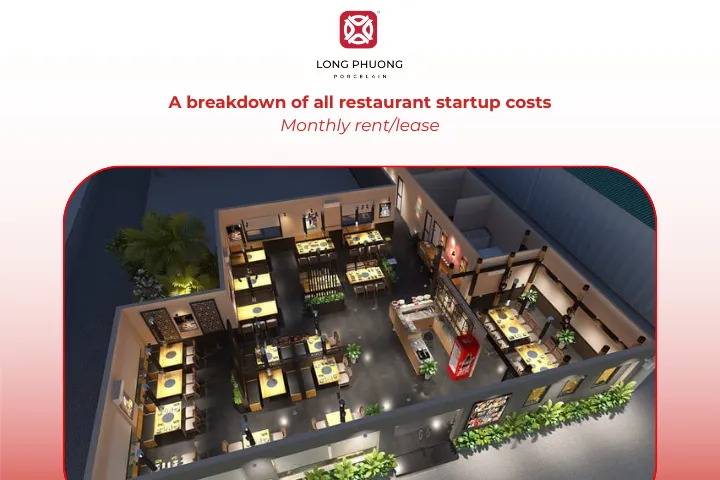
1.2. Buildout and construction
If your space was previously a clothing shop or office, you’ll need major renovations before you can serve your first meal. Plumbing, ventilation hoods, gas lines, ADA-compliant bathrooms, lighting, and dining room décor all fall under this category.
- Typical cost: $50–$300 per square foot
- Includes: flooring, walls, painting, electrical, signage, and layout design
It is smart to budget an additional 10–15% for unexpected construction issues because they almost always happen.
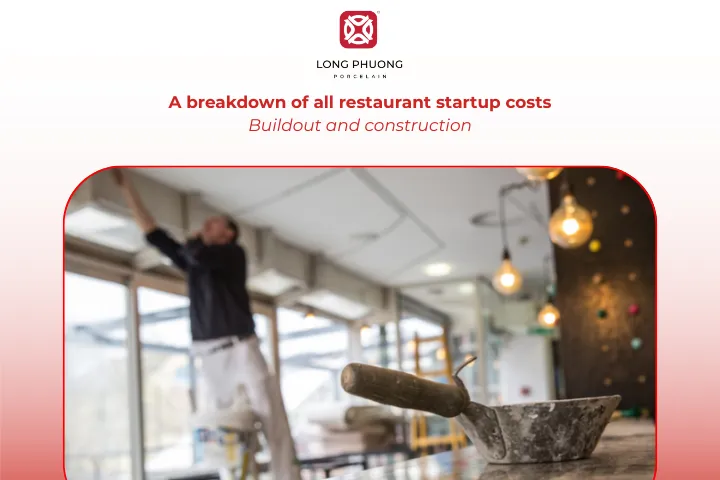
1.3. Kitchen equipment
The kitchen is the heart of every restaurant. Stoves, ovens, refrigerators, fryers, dishwashers, prep tables, and mixers are all essential. The total cost depends on your menu and cooking volume.
- Typical cost: $30,000–$200,000+
- Pro tip: Consider buying some used equipment to save money, but never compromise on refrigeration or fire-safety systems.
You can also look into equipment leasing, which spreads out payments and reduces upfront costs.
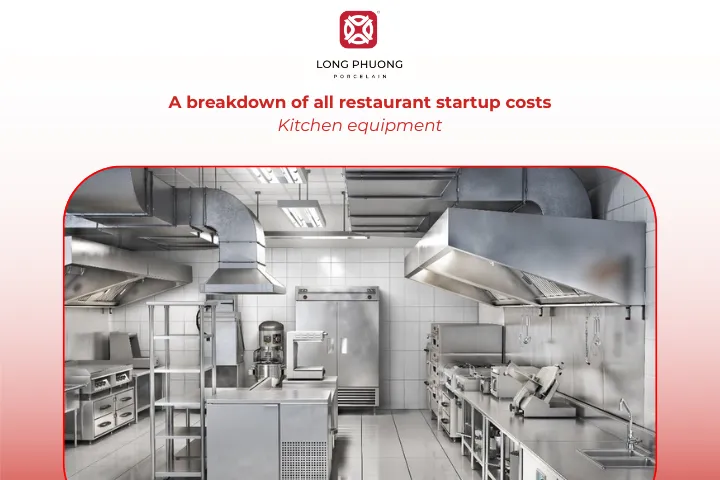
1.4. Furniture, fixtures, and décor
Your dining room is what customers see first, so presentation matters. This category covers tables, chairs, booths, lighting, décor, shelving, and sometimes the bar area setup. The goal is to create a space that feels inviting and aligns with your brand’s theme.
- Typical cost: $10,000–$100,000, depending on size and style
- Example: A casual café may spend $15,000, while an upscale dining room could easily exceed $80,000.
You can save money by mixing new and gently used furniture, or working with a local designer who understands your concept.
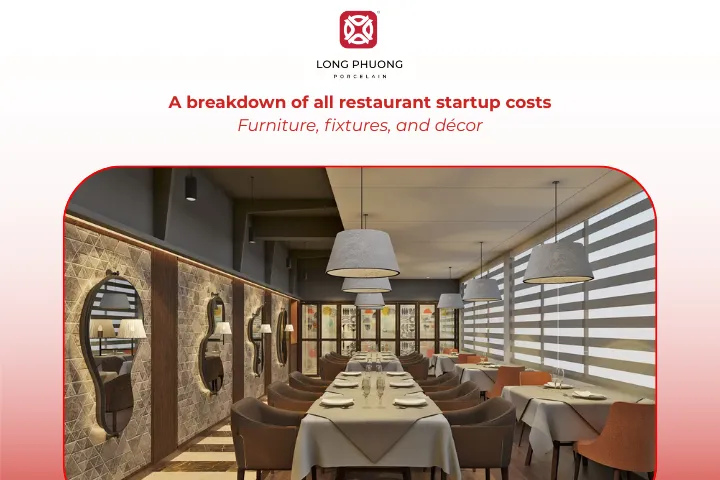
1.5. Tableware and smallwares
This category covers the tools you use to serve and prepare food. Tableware includes plates, bowls, cups, glasses, utensils, and serving trays. Smallwares include knives, pots, pans, cutting boards, tongs, and prep tools used in the kitchen.
- Typical cost: $5,000–$15,000
Though these items may seem minor, they play a big role in your restaurant’s image. Stylish, high-quality tableware can make your dishes look more appealing and elevate the overall dining experience.
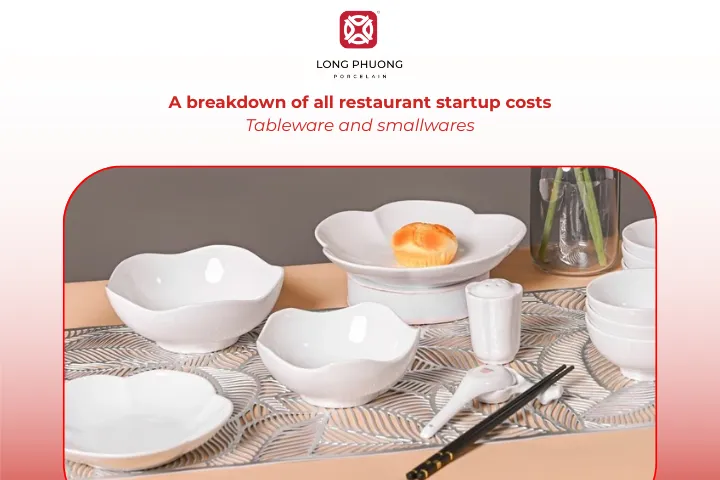
1.6. POS systems, software, and technology
Your Point of Sale (POS) system is the brain of your operation. It tracks sales, manages orders, and monitors inventory. Today’s restaurants often use cloud-based POS platforms with integrated mobile ordering, online reservations, and delivery options.
- Typical cost: $3,000–$15,000 upfront + monthly fees ($100–$500)
- Also includes: tablets, printers, Wi-Fi routers, and security systems.
Tech costs are easy to underestimate, so factor in ongoing subscription fees from day one.
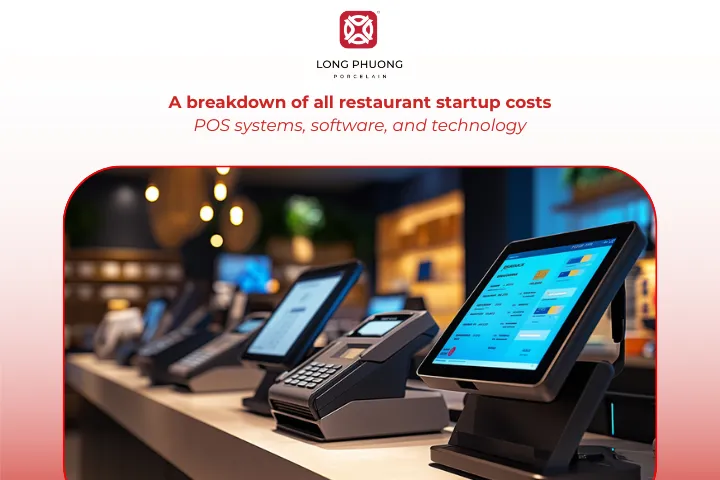
1.7. Licenses, permits, and inspections
You can’t open the doors without the right paperwork. Depending on your state and city, you may need:
- Business license
- Food service permit
- Health department inspection
- Fire inspection
- Liquor license (if applicable)
Liquor licenses can be the most expensive. In some cities, they can cost $10,000 to over $300,000, depending on availability and type.
- Typical cost: $5,000–$50,000+
You should start the application process early. Some permits can take several months to be approved.
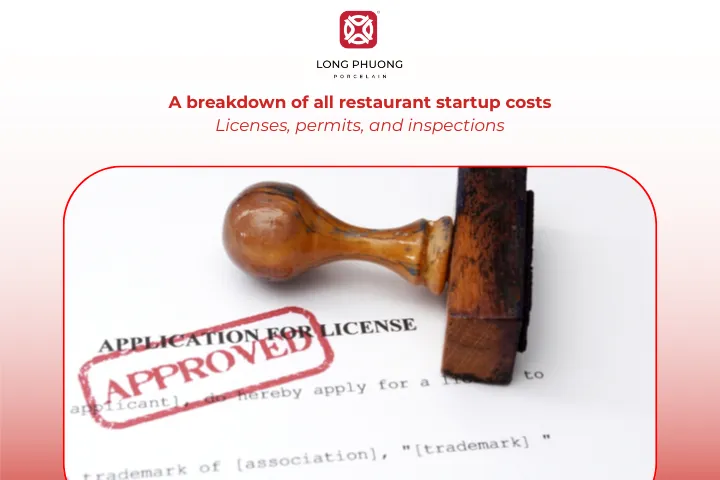
1.8. Initial inventory and supplies
Before opening day, you’ll need to stock your kitchen and bar with ingredients, beverages, cleaning products, and disposable items.
- Typical cost: $5,000–$25,000
- Includes: meats, produce, dry goods, coffee, alcohol, napkins, to-go containers, and cleaning supplies.
Buy just enough to cover your first few weeks of operations until sales stabilize. Overbuying at the start can waste cash and lead to spoilage.
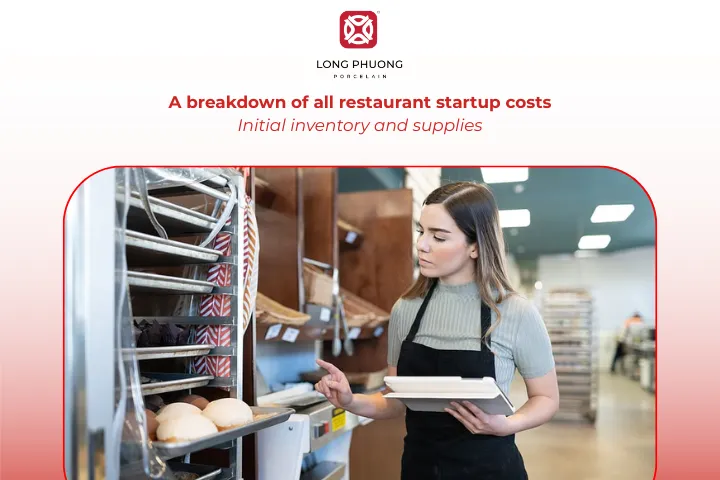
1.9. Hiring, training, and pre-opening payroll
You will need to hire and train your team before you start earning revenue. This includes wages paid during menu testing, training shifts, and soft openings.
- Typical cost: $5,000–$15,000, depending on restaurant size
- Includes: chefs, line cooks, servers, hosts, bartenders, and managers.
Many restaurants run “friends and family” trial events before the grand opening to test systems and train staff efficiently.
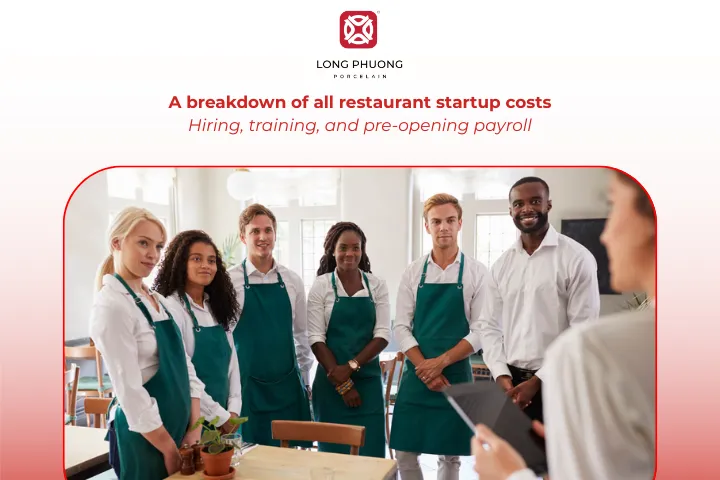
1.10. Labor and payroll
After opening, labor becomes one of your largest ongoing expenses. This category includes monthly wages, taxes, benefits, and bonuses for your entire staff, from kitchen crew to front-of-house employees.
- Typical cost: $10,000 to $30,000 per month for an average mid-sized restaurant
Keeping staff happy and motivated helps control payroll costs. Fair pay, flexible schedules, and a positive workplace lead to better service and lower turnover.

1.11. Marketing, branding, and grand opening
You can have the best food in town, but without visibility, nobody will show up. Marketing includes your logo, website, social media setup, signage, photography, local ads, and PR.
- Typical cost: $5,000–$25,000
- Don’t forget: A grand opening event or influencer tasting can bring valuable attention early on.
Investing in professional photos and a strong online presence pays off quickly. Because people often “eat with their eyes” before ever walking in.
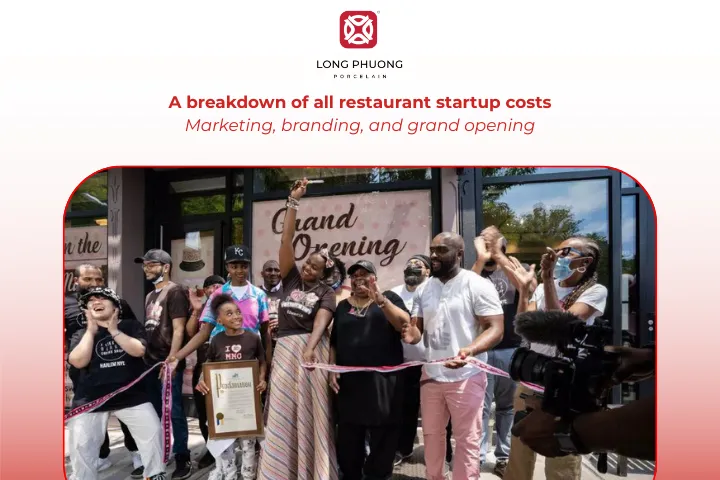
1.12. Utility costs
Electricity, gas, and water are essential for cooking, lighting, refrigeration, and maintaining a comfortable dining space. Utility expenses also include internet, phone service, and sometimes wastewater or recycling fees, depending on local regulations.
- Typical cost: $2,000 to $5,000 per month
Energy-efficient equipment and mindful usage can significantly lower these costs over time, helping your restaurant stay profitable month after month.
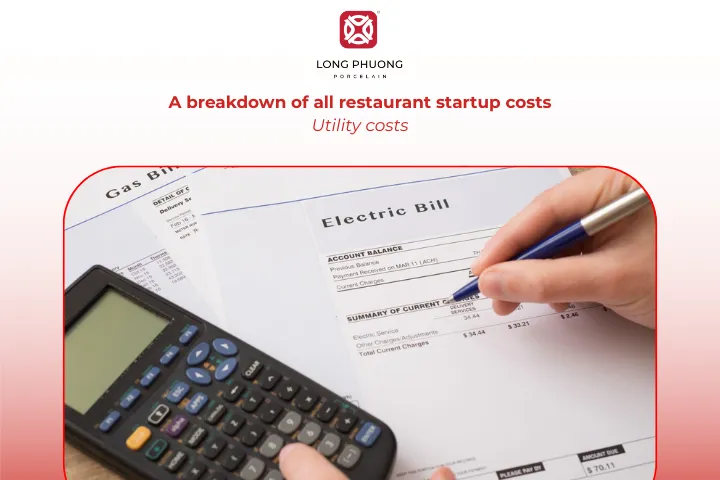
1.13. Sanitation costs
Every restaurant needs to stay spotless. Sanitation costs cover cleaning supplies, waste removal, pest control, and dishwashing essentials. Some owners also hire deep-cleaning services for kitchens and restrooms.
- Typical cost: $2,000 to $6,000
Keeping your restaurant spotless not only ensures safety but also shows customers you care about quality and hygiene.
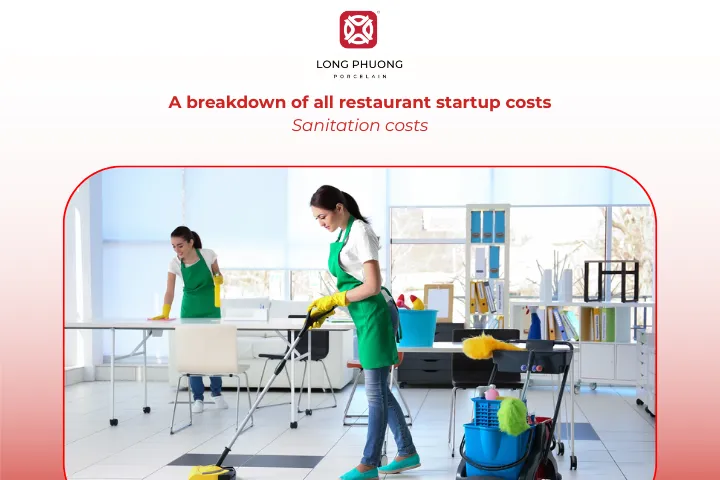
1.14. Maintenance and repairs
Kitchen equipment, plumbing, or air conditioning will eventually need attention. Routine maintenance prevents larger breakdowns and costly replacements later.
- Typical cost: $1,000 to $5,000, or about 1-3% of your monthly revenue
Investing in timely maintenance is far cheaper than facing emergency repairs that could halt your business for days.

1.15. Working capital and contingency fund
Working capital covers ongoing expenses such as rent, payroll, and inventory until the restaurant becomes profitable. It also serves as your safety net when business is slow or unexpected costs arise.
- Recommended: 3–6 months of operating costs
- Example: If your monthly overhead is $25,000, set aside $75,000–$150,000 as working capital.
Add an extra 10–20% contingency fund for emergencies. It’s the difference between surviving and shutting down early.
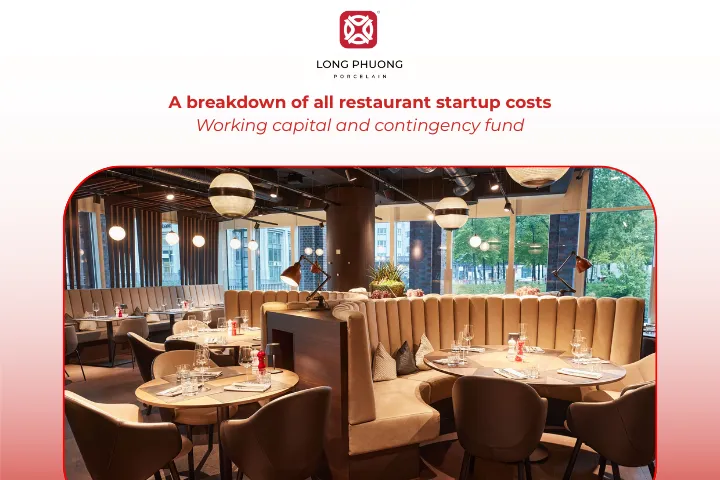
See more: what is a restaurant and how it works in the food industry
2. Three sample budgets (realistic scenarios)
To give you a clearer answer to “How much does it cost to start a restaurant?”, let’s look at three realistic examples showing how the total costs of opening a restaurant can vary depending on your restaurant’s size and concept.
2.1. Small restaurant startup costs
Assumption: 1,200 square feet, neighborhood café or small bistro, modest finishes, limited bar, small staff.
- Monthly rent/lease: around $3,000 per month (Deposit typically $9,000–$18,000)
- Buildout and construction: about $40,000
- Kitchen equipment: roughly $25,000 (a mix of new and used units)
- Furniture, fixtures, and décor: $12,000
- Tableware and smallwares: $6,000
- POS systems, software, and tech: $5,000 upfront plus small monthly fees
- Licenses, permits, and inspections: around $7,000
- Initial inventory and supplies: $8,000
- Hiring, training, and pre-opening payroll: $8,000
- Labor and payroll for the first month: about $10,000
- Marketing, branding, and grand opening: $7,000
- Utility costs: $2,000 per month
- Sanitation costs: around $2,000
- Maintenance and repairs: $1,000
- Working capital and contingency fund: $25,000
Estimated total startup cost: $150,000–$170,000
This setup fits first-time owners testing a small, manageable concept with limited staff and a simple menu.
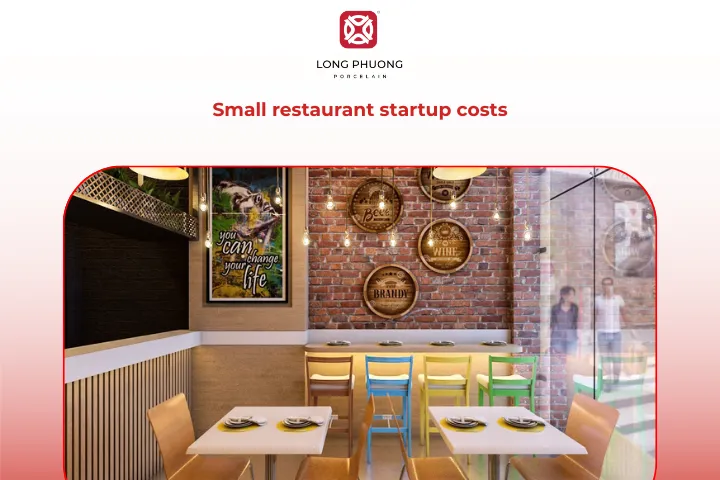
2.2. Mid-size casual restaurant startup costs
Assumption: 3,000 square feet, casual dining with a small bar, mid-level finishes, full menu, 25 to 40 seats.
- Monthly rent/lease: $10,000–$12,000 per month (Deposit typically $30,000–$60,000)
- Buildout and construction: about $210,000
- Kitchen equipment: around $75,000
- Furniture, fixtures, and décor: $30,000–$40,000
- Tableware and smallwares: $10,000
- POS systems, software, and tech: $15,000 upfront plus monthly fees
- Licenses, permits, and inspections: $15,000
- Initial inventory and supplies: $15,000
- Hiring, training, and pre-opening payroll: $20,000
- Labor and payroll for the first month: $25,000–$30,000
- Marketing, branding, and grand opening: $15,000–$20,000
- Utility costs: $3,000–$4,000 per month
- Sanitation costs: $3,000
- Maintenance and repairs: $2,500
- Working capital and contingency fund: $80,000
Estimated total startup cost: $500,000–$550,000
This is a balanced model for experienced operators who want stable dine-in and takeout revenue without going upscale.
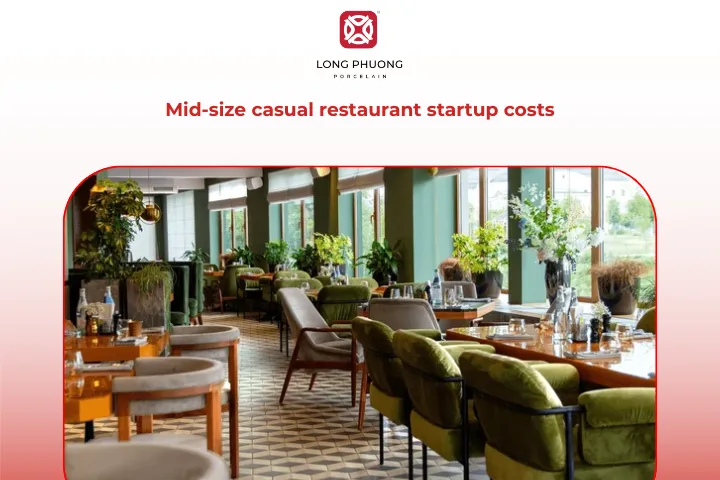
2.3. High-end restaurant startup costs
Assumption: 5,000 square feet, upscale finishes, full bar and wine program, tasting menus possible, higher staff levels, premium location.
- Monthly rent/lease: $20,000–$25,000 per month (Deposit typically $100,000–$150,000)
- Buildout and construction: $700,000–$1,000,000
- Kitchen equipment: $200,000 or more
- Furniture, fixtures, and décor: $150,000–$200,000
- Tableware and smallwares: $30,000
- POS systems, software, and tech: $30,000 upfront plus ongoing fees
- Licenses, permits, and inspections: $50,000–$100,000
- Initial inventory and supplies: $40,000
- Hiring, training, and pre-opening payroll: $50,000
- Labor and payroll for the first month: $70,000–$100,000
- Marketing, branding, and grand opening: $50,000 or more
- Utility costs: $5,000–$7,000 per month
- Sanitation costs: $5,000
- Maintenance and repairs: $5,000
- Working capital and contingency fund: $200,000–$250,000
Estimated total startup cost: $1.8 million–$2 million
This scale is ideal for experienced restaurateurs, investors, or hospitality groups looking to build a flagship dining destination.

3. Key tips for successfully opening a restaurant
Once you have the answer to “how much does it cost to start a restaurant,” it’s time to consider a few important tips to ensure your business runs smoothly:
- Start with a realistic business plan: Clearly outline your concept, target audience, cost projections, and revenue goals. A solid plan guides your decisions and makes it easier to secure investors or loans.
- Don’t underestimate your startup costs: Many new owners miscalculate expenses. Always add a 10–15% buffer for unexpected costs such as delays, permit issues, or last-minute equipment needs.
- Prioritize location over aesthetics: A beautiful restaurant won’t succeed if it’s in the wrong area. Choose a location with good visibility, foot traffic, and easy parking that fits your target market.
- Invest wisely in kitchen equipment: Spend on essential, durable items first. You can always upgrade later as revenue grows. Buying a mix of new and used equipment can significantly lower startup costs.
- Train your staff well: Your employees represent your restaurant and directly interact with customers. Make sure they are professional, attentive, and responsible.
- Build your brand early: Start marketing months before opening. Use social media, local events, and influencer partnerships to build buzz and collect pre-launch followers.
- Create an appealing menu: The menu is the heart of your restaurant. To keep loyal customers and attract new ones, regularly review and adjust your dishes to suit your target customers’ tastes.
- Focus on customer experience: Excellent service and atmosphere are just as important as great dishes. People remember how they felt as much as what they ate.
- Monitor cash flow closely: Track every expense and revenue stream, especially during the first six months. A good accounting system prevents surprises and helps you stay profitable.
- Stay compliant with regulations: Health, safety, and labor laws vary by state and city. Keep licenses current and schedule routine inspections to avoid costly shutdowns.
- Keep adapting: The restaurant industry changes fast. Listen to customer feedback, watch trends, and be willing to adjust your menu or operations when needed.
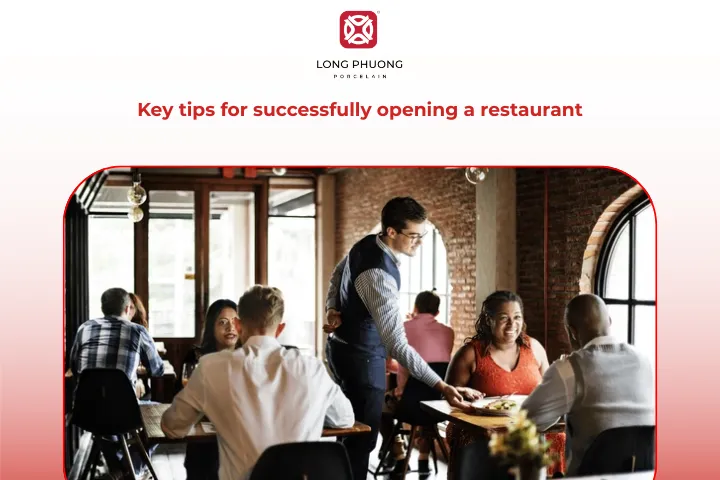
4. Where to buy high-quality tableware for your restaurant
Choosing the right tableware can transform the dining experience. Long Phuong Porcelain offers durable, high-quality pieces that withstand daily use while keeping your tables looking elegant. From classic sets to modern designs, our collection fits any restaurant style.
Beyond aesthetics, Long Phuong Porcelain provides customizable options, including logos and unique patterns, helping your restaurant stand out. Investing in these pieces reduces long-term replacement costs and ensures every dish is presented beautifully, leaving a lasting impression on your guests.
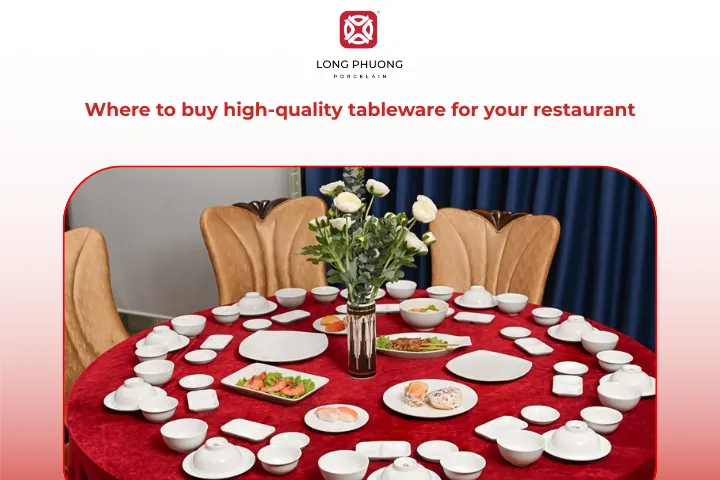
5. FAQs
5.1. How much does it cost to open a buffet restaurant?
Buffet restaurants generally require more space, larger kitchen setups, and extensive food inventory. Costs often range from $250,000 to $750,000, depending on the number of stations, seating capacity, and menu variety. Expect higher utility and food waste expenses compared to à la carte restaurants.
5.2. How much does it cost to open a seafood restaurant?
Seafood restaurants typically fall between $300,000 and $900,000 in startup costs. Fresh seafood demands advanced refrigeration systems, strict sanitation compliance, and frequent deliveries, which increase operating costs. Waterfront or premium urban locations can drive prices even higher.
5.3. How much does it cost to open a hot pot and grill restaurant?
This concept requires specialized equipment like built-in grills, exhaust systems, and individual table burners. Depending on size and design, startup costs usually range from $400,000 to $1 million. Energy bills and maintenance costs also tend to be higher due to continuous heat use.
5.4. How much working capital should I have?
It’s smart to reserve at least 3 to 6 months of operating expenses as working capital. For most restaurants, that means having $75,000 to $150,000 set aside. This cushion helps you cover payroll, rent, and inventory during the early months before profits stabilize.
5.5. Is franchising cheaper than starting an independent business?
Not always. While franchises offer brand recognition and support, they come with franchise fees, royalty payments, and strict operational rules. Startup costs can range from $200,000 to over $2 million, depending on the brand. Independent restaurants may have more freedom but require more marketing and management effort.
5.6. How long will it take until I make a profit?
Most restaurants need 6 months to 2 years to become profitable. It depends on your location, concept, pricing, and management. Careful budgeting and steady marketing can shorten the timeline, but patience and consistency are key to long-term success.
We hope the information from Long Phuong Porcelain has helped you answer the question, “How much does it cost to start a restaurant?”. Wishing you great success in your business!
Related Articles
CEO of Long Phuong Group Joint Stock Company, with more than 20 years of exploration and research to obtain the best formulas and professional experience, Long Phuong Porcelain has produced more than 400 designs of all kinds of household porcelain, Significant contributions to Vietnam's ceramic industry.
 Vietnam
Vietnam
